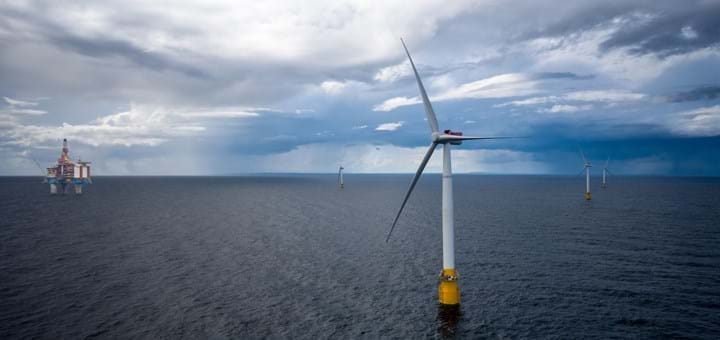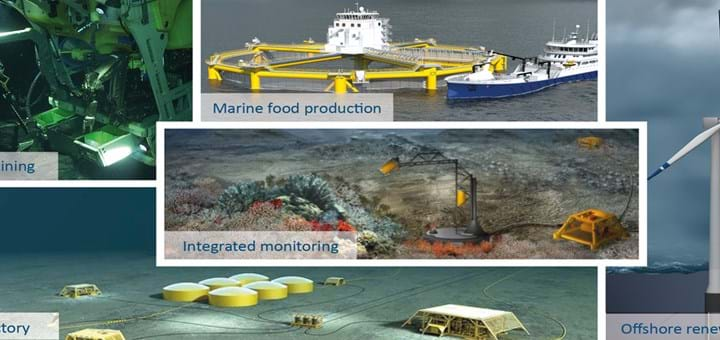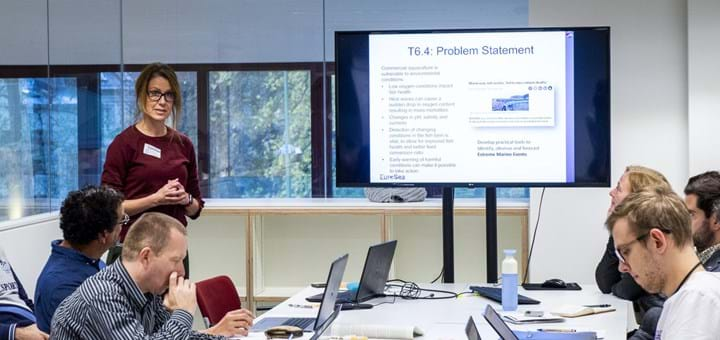Collecting Oceans of Data from Blue Depths
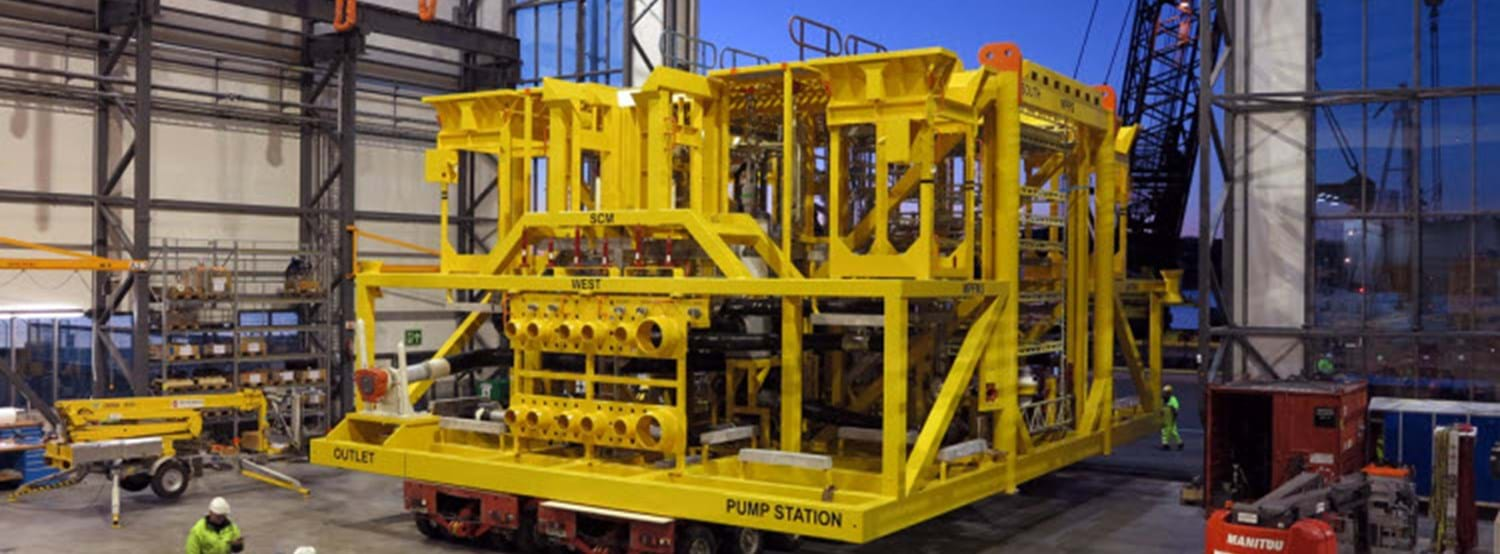
How do you keep your equipment in good condition, when it’s at the bottom of the ocean? Oil service company OneSubsea has the answer.
Operating at more than 2,500 metres below sea level poses some unique challenges – especially when a vital piece of machinery stops working.
– We’re talking about incredibly complex pieces of equipment, which are very difficult to access, explains Torstein Soerhaug, Digital Enablement Manager at OneSubsea.
– Companies may need to shut down for hours or even days to deal with a problem, and the costs can really start piling up, he continues.
Luckily, OneSubsea, an international company with offices in Bergen as well as elsewhere in Norway, is able to provide clients with subsea equipment that can monitor its own condition, reporting back to land to assess if it needs repair or maintenance.
By using a network of sensors that feed information back to land based control centres, the company can help operators to take action ahead of time, instead of waiting for problems to arise.
They can even help to optimize the way that certain systems work, by sifting through mounds of data. This use of “Big Data” can save millions of dollars over a field’s lifetime.
– Digitalization as a key part of our strategy at OneSubsea, says Soerhaug, – both within our company and in the services we provide to customers.
Digital for People, Planet and Profits
Soerhaug adds that going digital at the deep end doesn’t just bring benefits for the bottom line. It can even improve health and safety.
– By enabling more operations to be carried out from land, companies can reduce the number of people who need to travel to offshore installations, he explains.
This means fewer accidents, better work life balance, and a reduction in carbon emissions that come with transporting workers out to platforms.
Increasingly, companies will be able to assess the need for maintenance and carry out upgrades from the safety of their offices – which can be hundreds of kilometres away from the equipment in question.
Disruption is coming
If this seems futuristic, Soerhaug also believes that we will be able to go much further in coming years. – I think we will see a much greater degree of automization in the oil and gas industry. This includes self-diagnosing and autonomous systems. In tomorrow’s world, we will even see systems that can optimize themselves using machine learning, which would really benefit the industry, says Soerhaug.
However, these advances could bring a lot of disruption for oil and gas companies in future. Among other things, culture and business models will need to change.
Businesses will also need to think about the type of competence that they will need to cope with the digital shift. However, Soerhaug underlines that old-school engineering expertise will still be important as companies enter this new world.
Making Better Decisions
Inger Graves, also based in Bergen, is another professional who knows a lot about what it takes to operate in harsh ocean environments.
Her company Aanderaa, part of Xylem, provides sensors and systems that measure some of the toughest conditions ever recorded at sea.
In fact, the company’s sensors were able to record wave heights of up to an incredible 16-17 metres last year, on the day that the Viking Sky cruise ship nearly capsized off the Norwegian coast.
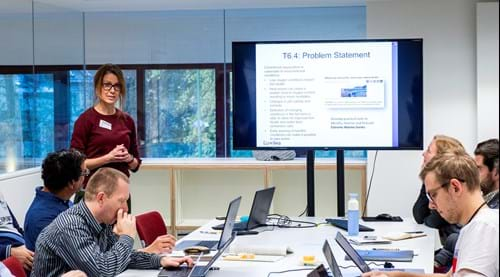
Inger Graves, presenting. Photo by Aanderaa Data Instruments
Graves is responsible for Xylem’s products in the Ocean & Coastal markets. She believes that gathering enough data, and analysing this data in the right way, is a vital part of making better decisions out at sea.
Correct ocean data is the foundation for digitalization and machine learning, and only by strengthening this foundation, we can realize improvements in the ocean industries.
– If the crew of the Viking Sky had been more aware of these huge waves ahead of time, then maybe they would have sought shelter much earlier, she says. She adds that collecting more data can also help other ocean industries, such as the aquaculture and energy sectors, to make better calls.
– For fish farmers, it’s about measuring parameters such as water quality, oxygen levels and other key factors affecting their fish. For oil and gas operators, they can find out about conditions in the sea before drilling their next well.”
Building Networks Underwater
However, she notes that challenges remain, not in collecting the data themselves, but in recovering this information out of the blue depths.
– We have very good sensors, but it is still difficult to transfer large amounts of data from the deep sea to the surface. However, along with others in western Norway, we are working on improving this process.
Aanderaa, together with other local players in Greater Bergen, are now looking to establish a Centre for Research-Based Innovation (SFI) that will focus on this issue.
The SFI Smart Oceans centre, backed by a consortium of private companies and research institutions such as the University of Bergen and NORCE, will seek to improve underwater networks.
According to Graves, this will be a crucial step towards developing our ocean industries in the future.
– We need the right data in order to measure the impact we are having on our seas and oceans – and to ensure we are growing in a sustainable way. There isn’t a single company that has the answer here. If we are going to solve this, we are going to need to work together, she says.
With the blue ecosystem of Greater Bergen behind them, companies like Aanderaa and OneSubsea have a good chance of changing the ocean industries for the better.
-------------------------------------------------------------------------------------------
This article is drawn from the magazine “Powering the Future” featuring interviews with industry leaders on topics such as wind energy, CCS and hydrogen.
The magazine is a collaboration between Invest in Bergen and GCE Ocean Technology.
Contact Information
Kjersti Boge Christensen
Communication Manager


OneSubsea delivers integrated solutions, products, systems and services for the subsea oil and gas market.
OneSubsea is a valued partner of GCE Ocean Technology since 2006.

Aanderaa is a global team unified in a common purpose: creating advanced technology solutions to the world's water challenges.
Developing new technologies that will improve the way water is used, conserved, and re-used in the future is central to their work.
Aanderaa is a valued member of GCE Ocean Technology since 2010.

